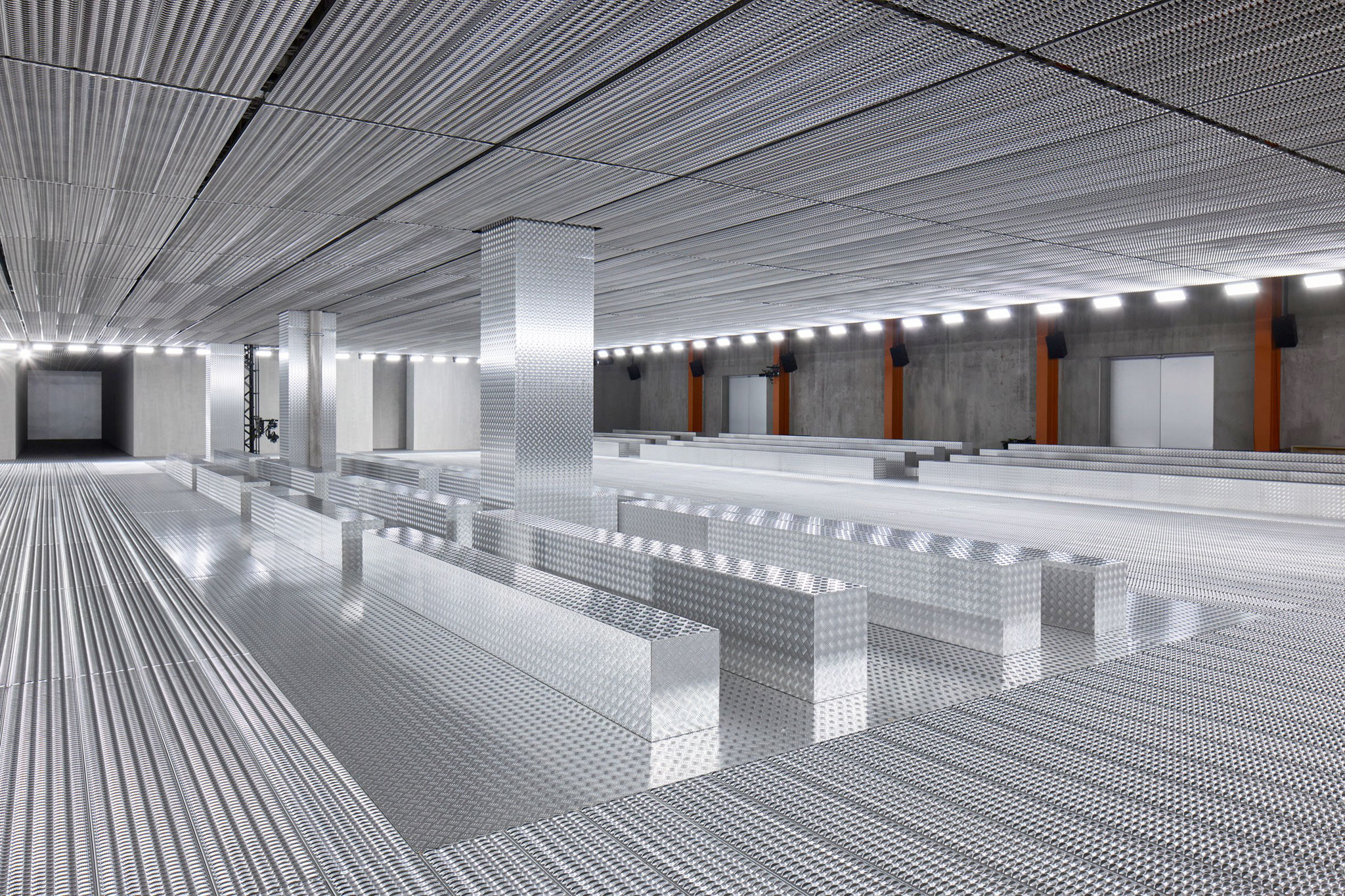Within this industrial space, with an Aluminium envelop, a material 100% recyclable and, maybe for its eco-friendly properties, chosed by AMO and Prada as the best material to represent their theme of fluidity, the models walked between liquid walls formed by 3,000 kilos of slime that dripped down from the ceiling and formed green puddles on the floor.
AMO's design aimed to change the perception of the industrial space, adding an organic aspect that would also affect how the audience saw and interacted with the models. Nodding to that of the collection itself, called Fluid Form, which Prada described as "an examination of fluid architecture, around the human body".
A ring of industrial lamps placed around the ceiling lit up the catwalk, adding to its clinical feel.

Prada's Spring Summer 2024 by AMO. Photograph courtesy of Prada.

AMO's design aimed to change the perception of the industrial space, adding an organic aspect that would also affect how the audience saw and interacted with the models. Nodding to that of the collection itself, called Fluid Form, which Prada described as "an examination of fluid architecture, around the human body".
A ring of industrial lamps placed around the ceiling lit up the catwalk, adding to its clinical feel.

Prada's Spring Summer 2024 by AMO. Photograph courtesy of Prada.

Prada's Spring Summer 2024 by AMO. Photograph courtesy of Prada.
"An examination of fluid architecture, around the human body. The Spring/Summer 2024 Prada menswear collection by Miuccia Prada and Raf Simons proposes an absolute freedom of the body, expressed through the foundations of the garments that clothe it.
The shirt is a point of departure, its structure and details borrowed as a base to transform an entire stable of menswear - suits, raincoats, active sportswear, reporter jackets. Reconsidered construction, re-constructed. Beginning with simplicity, the collection proposes a notion of expansion, amplification of an idea - a paradox between silhouette and materiality. The ultimate aim is a constant awareness of the body within, and its liberation."
The shirt is a point of departure, its structure and details borrowed as a base to transform an entire stable of menswear - suits, raincoats, active sportswear, reporter jackets. Reconsidered construction, re-constructed. Beginning with simplicity, the collection proposes a notion of expansion, amplification of an idea - a paradox between silhouette and materiality. The ultimate aim is a constant awareness of the body within, and its liberation."
Prada statement.
AMO, which is the research and creative studio of Dutch architecture firm OMA, has created numerous show designs for Prada in the Fondazione Prada space.





































